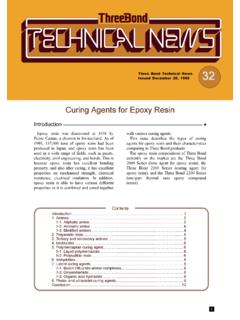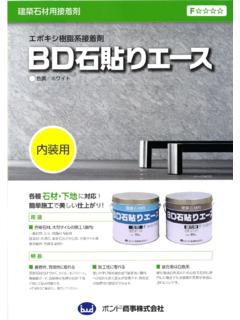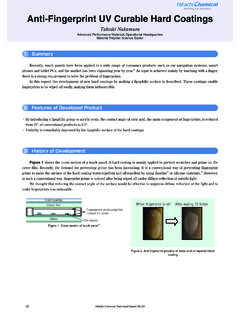Transcription of SAFETY DATA SHEET - hitachi-chem-ts.co.jp
1 : ISSUED DATE , 2012. REVISED DATE . PAGE 1/8. SAFETY data SHEET . 1. IDENTIFICATION. Product identifier: Sample Manufacturer/Supplier: ABCD Company Ltd. Address: Name of section: Phone number: Emergency phone number: Further Information: Recommended use of chemical and restrictions on use: 2. HAZARDS IDENTIFICATION. PHYSICAL HAZARDS: Flammable liquids ; Category 2. HEALTH HAZARDS: Acute toxicity Oral ; Not classified Dermal ; Not classified Inhalation; Category 4. Skin corrosion/irritation ; Category 2. Serious eye damage/eye irritation ; Category 2A. Respiratory sensitization ; Classification not possible Skin sensitization ; Classification not possible Germ cell mutagenicity ; Category 2.
2 Carcinogenicity ; Category 2. Reproductive toxicity ; Category 1. Specific target organ toxicity Single exposure;. Category 1(Central nervous system). Category 3(Respiratory tract irritation, Narcotic effects). Specific target organ toxicity Repeated exposure;. Category 1(Central nervous system, Kidneys, Liver , Respiratory organ, Nervous system, Hematic system). Aspiration hazard ; Classification not possible ENVIRONMENTAL HAZARDS: Hazardous to the aquatic environment: Acute; Category 2. Chronic; Not classified Hazardous to the ozone layer: Classification not possible (Continued on page 2). Sample ABCD Co., Ltd. : ISSUED DATE , 2012.
3 REVISED DATE . PAGE 2/8. Hazard Pictogram : Signal word: Danger Hazard statements: Highly flammable liquid and vapour. Harmful if inhaled (vapour). Causes skin irritation. Causes serious eye irritation. Suspected of causing genetic defects. Suspected of causing cancer. May damage fertility or the unborn child. Causes damage to organs (Central nervous system). May cause respiratory irritation. May cause drowsiness and dizziness. Causes damage to organs (Central nervous system, Kidneys, Liver , Respiratory organ, Nervous system, Hematic system) through prolonged or repeated exposure. Toxic to aquatic life. Precautionary statements: Prevention: Keep container tightly closed.
4 Keep away from heat/sparks/open flame No smoking. Ground/Bond container and receiving equipment. Use explosion-proof electrical/ventilating/lighting/equipmen t. Take precautionary measures against static discharge. Use only non-sparking tools. Do not breathe mist/vapours/spray. Use only outdoors or in a well-ventilated area. Obtain special instructions before use. Do not handle until all SAFETY precautions have been read and understood. Wear protective gloves/eye protection/face protection. Do not eat, drink or smoke when using this product. Wash hands thoroughly after handling. Avoid release to the environment. Responses In case of fire, use dry chemical powder, carbon dioxide, foam, water spray and dry sand for extinction.
5 IF INHALED: Remove victim to fresh air and keep comfortable for breathing. Sample ABCD Co., Ltd. : ISSUED DATE , 2012. REVISED DATE . PAGE 3/8. (Continued on page 3). IF ON SKIN (or hair) : Take off immediately all contaminated clothing. Rinse skin with water/shower. Take off contaminated clothing and wash before reuse. If skin irritation occurs: Get medical advice/attention. IF IN EYES: Rinse cautiously with water for several minutes. Remove contact lenses, if present and easy to do. Continue rinsing. If eye irritation persists: Get medical advice/attention. IF exposed or concerned: Call a POISON CENTER or doctor/physician.
6 Get medical attention/advice if you feel unwell. Storage: Store locked up. Store in a well-ventilated place. Keep cool. Keep container tightly closed. Disposal: Dispose of contents/container in according with local/regional/national/international regulation. 3. COMPOSITION / INFORMATION ON INGREDIENTS. Substance/Mixture: Mixture General product description: Thinner Ingredients and composition: Chemical name Composition (wt. %) Chemical formula CAS No. Toluene 45 55 C6H5CH3 108-88-3. Styrene 45 55 C6H5CH=CH2 100-42-5. UN Class: 3 (Flammable Liquids) UN No.: 1263 (Paint Related Material). 4. FIRST - AID MEASURES. Inhalation: Remove the victim from the contamination immediately to fresh air.
7 If breathing is weak, irregular or has stopped, open his airway, loosen his collar and belt and administer artificial respiration. Get medical attention. Skin contact: Remove all contaminated clothing. Wash the affected area with plenty of water with mild soap. If irritation is continued, refer to medical attention. Eye contact: Gently rinse the affected eye with clean water for at least 15 minutes lifting upper and lower eyelids occasionally. Get medical attention immediately. Ingestion: Do not induce vomiting and get medical attention. Never give anything to someone who is unconscious. Sample ABCD Co., Ltd. : ISSUED DATE , 2012.
8 REVISED DATE . PAGE 4/8. 5. FIRE - FIGHTING MEASURES. Flammable properties: Flash point 4 (Product). Suitable extinguishing media: Dry chemical powder, carbon dioxide, foam, water spray and dry sand. Specific hazards regarding with fire-fighting measure Large fires are best controlled by foam. Apply water from a safe distance to cool and project surrounding area. Firefighters should wear proper protective equipment and self-breathing apparatus. Hazardous combustion products: Carbon monoxide, smoke, fumes and oxides of carbon. Toxic gases (carbon oxides and styrene oxide.) will form upon combustion. 6. ACCIDENTAL RELEASE MEASURES.
9 Personal precautions: Evacuate personnel to safe area. Evacuate non- essential personnel. Shut off all sources of ignition. No flares, smoking or flame in area. Wear proper protective equipment. Environmental precautions: Do not wash away into sewer, watercourse or river. Methods and materials for containment and cleaning up: For small spill, absorb spills with inert materials( dry sand or earth), then place in a chemical waste containers. For large spill, dike for later disposal, cover spills with foam, then place in a chemical waste container using non-sparking tools. Wipe off residual spill by using paper. 7. HANDLING AND STORAGE.
10 Handling: Shut off all gas pilot and electrical igniters and other sources of ignition during use and until all vapors gone. Avoid release of this material into sewer or drainage. In case of handling, wear proper protective equipment to avoid contact and inhalation. Use local exhaust ventilation. Storage: Keep containers tightly closed and store in a cool, dark, well-ventilated location. Keep away from heat, flame, ignition source and sunlight. Incompatibilities: oxidizing materials, strong acids, rubber, copper, copper alloy, oxygen, bases and peroxide Sample ABCD Co., Ltd. : ISSUED DATE , 2012. REVISED DATE . PAGE 5/8.





